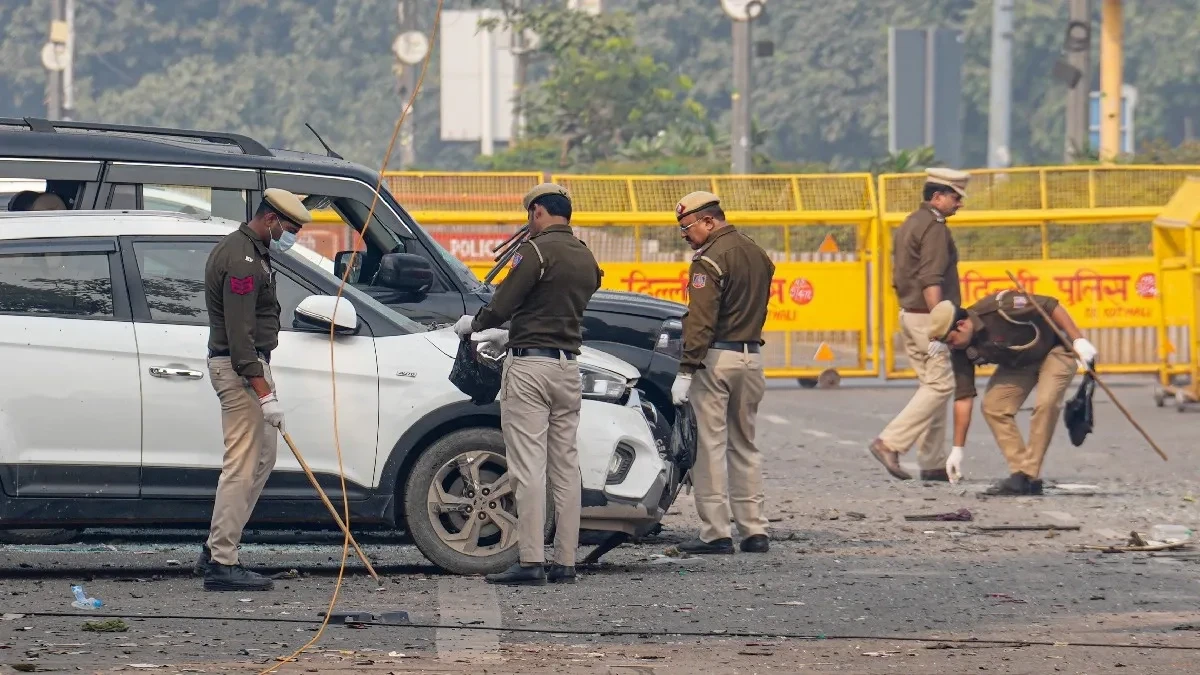A major breakthrough in the investigation into the November 10, 2025 Delhi car blast near the Red Fort has emerged with the recovery of three 9mm-caliber cartridges-two live rounds and one spent shell-from the explosion site.
Officials say these cartridges are not normally available to civilians, as 9mm ammunition falls under the Prohibited Bore (PB) category in India, meant only for security forces or individuals with rare special authorization. Their presence at the blast site has significantly reinforced suspicion of an organized terror link.
Forensic Findings Point to High-Level Planning
According to Forensic Science Laboratory (FSL) teams, the cartridges were found along with traces of two different explosive substances. Preliminary reports confirm that one material was ammonium nitrate, while the second, described as more powerful, is still undergoing complete forensic analysis.
Investigators say the presence of live ammunition suggests there may have been an intention to use firearms or create additional chaos during the attack. Authorities are now tracing the origin of the restricted 9mm cartridges to determine whether they were stolen, diverted from authorized stock, or sourced through terror networks.
Blast Details: Deadliest Attack in Recent Years
The explosion occurred at 6:52 pm on November 10, 2025, when a Hyundai i20 car detonated near the Red Fort metro station at a traffic signal. The blast killed at least 13 people and left 24 others injured, making it one of the most serious security incidents in Delhi in recent years.
The vehicle had reportedly been parked near the Red Fort for over three hours before the explosion. CCTV footage shows the car entering a parking area next to Sunehri Masjid and remaining there until detonation.
The car was driven by Dr. Umar Un Nabi, a doctor from Pulwama district in Jammu and Kashmir, whose DNA matched human remains recovered from the site. Forensic results indicated a mix of explosives, including ammonium nitrate and possibly RDX.
Terror Module Under Scanner
The incident is linked to a wider terror module under investigation. Multiple professionals, including doctors, have reportedly been connected to the network. This same module is believed to be behind the storage of large amounts of explosive materials, including a major seizure in Faridabad where over 2,900 kg of suspected explosives were recovered from a rented property.
Authorities are examining whether the ammunition and explosives found were supplied by the same group.
NIA Takes Over High-Profile Case
Given the severity of the attack, the National Investigation Agency (NIA) has taken over the probe, with support from the National Security Guard (NSG) and Delhi Police. Home Minister Amit Shah confirmed that all possible angles are being investigated and that agencies are combing through CCTV footage and forensic evidence from multiple locations.
Restricted Ammunition Raises Red Flags
- The discovery of 9mm PB cartridges is of particular concern. Under the Arms Rules, 1962 and subsequent amendments:
- 9mm ammunition is Prohibited Bore and typically used by the police, armed forces, and government security units.
- Civilians can only obtain such ammunition under exceptional threat-based licensing, requiring extensive scrutiny and state-level approval.
- General civilians are permitted only Non-Prohibited Bore (NPB) ammunition such as .32 or .22 calibers.
Because 9mm cartridges cannot be legally possessed without special authorization, investigators say their presence strongly suggests:
- Access to restricted weapon supplies
- Possible diversion of ammunition from authorized sources
- Direct involvement of trained operatives linked to extremist groups
- Broader Explosive Network Under Investigation
In addition to the blast site findings, large quantities of ammonium nitrate and other bomb-making materials were recovered from multiple locations tied to the same terror cell. Authorities believe one of these sites supplied raw explosives used in the Red Fort car blast.
With forensic reports pending and supply routes under active examination, the investigation continues to focus on identifying the full network involved, understanding the extent of planning, and tracing the origins of both the explosives and restricted ammunition.
